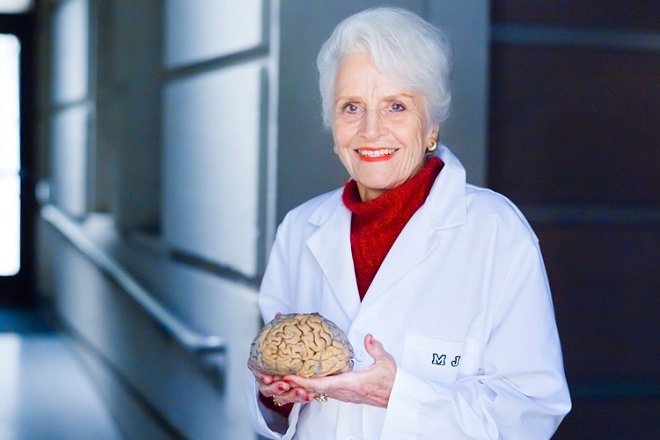What a brain, what a life: Marian Diamond, neuroplasticity pioneer, dies at 90
___
Marian Diamond, neuroscientist who gave new meaning to ‘use it or lose it,’ dies at 90 (The Washington Post):
“Marian Diamond, a pathbreaking neuroscientist whose research — including a study of Albert Einstein’s preserved brain — showed that the body’s three-pound seat of consciousness was a dynamic structure of beautiful complexity, capable of development even in old age, died July 25 at an assisted-living community in Oakland, Calif. She was 90…
Dr. Diamond, a professor emerita of integrative biology at the University of California at Berkeley, was for decades known on campus as the woman with the hat box. Inside the container, decorated on the outside with a floral print and carried by a bright blue string, was a preserved human brain.
It was the crucial prop for a lesson she spent a half century teaching: that the brain was, as she once wrote, “the most complex mass of protoplasm on this earth and, perhaps, in our galaxy.”
Dr. Diamond was considered a foundational figure in modern neuroscience. Crucially, she provided the first hard evidence demonstrating the brain’s plasticity — its ability to develop, to grow, even in adulthood. “In doing so,” her colleague George Brooks said in a statement, “she shattered the old paradigm of understanding the brain as a static and unchangeable entity that simply degenerated as we age.”…
Dr. Diamond went on to develop a rich theory of brain plasticity, one that she sometimes summarized with a phrase more commonly heard at a gym than a neuroscience classroom: “Use it or lose it.” In papers and lectures often directed at a wide audience, she outlined five factors crucial to brain development at any age: diet, exercise, challenge, newness and — perhaps surprising for a laboratory researcher — love.”




What a woman!